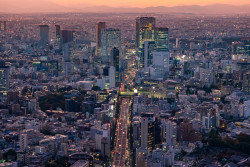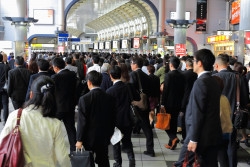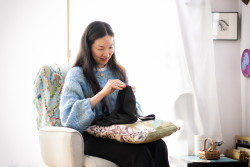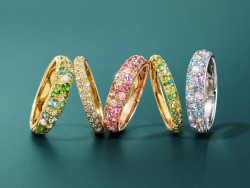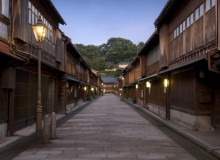
Originally published on metropolis.co.jp on May 2011

Shane Busato
After twenty years in Harajuku, Kaz Taira is getting out of dodge. Once he settles on a new space, he’s moving his hair salon, Dude, to Shimokitazawa. The current digs aren’t what they used to be. Once the site of a fashion revolution predicated on self-expression and subtle subversion, Harajuku has evolved into little more than choice real estate for purveyors of fast fashion looking to acquire the legitimacy of an Omotesando address.
“There are ten gyaru stores on my street alone,” Taira says. “And a major chain is moving in this month.”
Before he opened low-key, laid-back Dude, Taira spent twelve years at the aptly-named Panorama, a larger salon that afforded him a broad view of the area’s changing business demographics. Late-arriving franchise retailers coveted the credibility of a Harajuku image they knew little about, and, in their rush to reproduce it, created a strangely conformist simulacrum that borrowed from the opposing aesthetic of Shibuya style. Shibuya style was loud and cheap, the visual equivalent of a slogan. Golden Arches, if you will. Its subsequent triumph as a recognizably Japanese cultural export and consumer phenomenon wouldn’t be so troubling if not for the perception, widely-shared among Japan’s fashionistas, that Japan’s fashion industry is becoming something it shouldn’t.
“For me, the essence of Harajuku style is being an independent individual, and dressing for yourself. Not trying to impress, fit in, or one-up,” Taira says. “Fashion shouldn’t be an arms race.”
But an arms race it has become, at least at the retail level, and in any arms race economies of scale exert influence. Fast fashion stores (Shimamura, H&M, Forever 21) benefit. They sell five products for the price of one, and they’ve all been tied to sweatshops. And while citing child labor in developing countries is the easiest way to make clear just how damaging McFashion can be, it doesn’t reveal the full spectrum of cultural neuroses fast fasthion preys on.
We all wear clothes, and as Maki Nakamura—who works in textiles for Issey Miyake—recently pointed out to me, we all make choices every time we dress ourselves. If we go out in public, those decisions acquire a social dimension. Like a lot of people, I’ve been guilty of passing my fashion apathy off as a political statement—claiming I’m less shallow than people who dress purposefully because I’m not as careful about my appearance. But complacency is toxic no matter how you spin it, and it’s the not caring part that underpins the spending habits McFashion outlets bank on. At best, indifference toward what we wear is an illusion. At worst it’s complicity in a sinister, paradoxical kind of corporate brainwashing that touches on our deepest insecurities.
“We live in an uncertain world,” says Nakamura. “What people want most of all is to feel safe. Any kind of conformity, especially the immediate kind you can access through clothing, offers that safety. If you look the same as someone else, you can see yourself in others, and you can feel like you exist.”
Designers respond to our anxiety by offering bland, saleable products to accommodate our fevered times, manifesting a classic tension between thoughtfulness and austerity that’s long been an occupational hazard for people like Nakamura, whose work depends on some level of collective consumer faith in high culture.
That tension causes some bizarre parsing amongst consumers. “People are into lifestyle right now. They pay more attention to what they eat than what they wear. Designers tie their products to lifestyles because fashion for its own sake is perceived as frivolous,” says Nakamura. I shouldn’t have to point out the contradiction in terms that extricating style from lifestyle presents, or the significance of clothing production to the global economy and quality of life the world over.
If you’re still not convinced consumer fashion in the recession era is alarmingly schizophrenic, consider the marketing history that underlies Uniqlo’s current offerings—the exportation of affordable Japanese fashion to New York, where it was promoted on the basis of its Japanese-ness, then a subsequent reverse importation of the New York-approved product back to Japan, where it’s now successfully marketed using gaijin models who’d be equally at home in Hitler’s idea of a good Urban Outfitters catalogue.
One can see why another designer I recently met confessed to feeling like she’s part of Japanese fashion’s lost generation.
We have a responsibility to reject fashion as a least common denominator, and doing so is largely a matter of changing your habits. Resist the temptation to visit chain stores out of anxiousness or the desire for a familiar, unchallenging experience. Instead, invest the effort to ensure you’re shopping at independent stores. There are plenty in neighborhoods like Shimokitazawa, Kichijoji and Koenji—not exactly Tokyo’s hinterlands. Buy secondhand where possible. Choose one nice garment instead of five cheap ones. Remember that the varieties of self-expression available when you dress yourself are limitless, and that your decision to engage with them is mandatory. Be purposeful about the opportunities this presents. Because choosing our clothes, like any other decision, reveals something about our character, and it shapes the world we make for ourselves.


